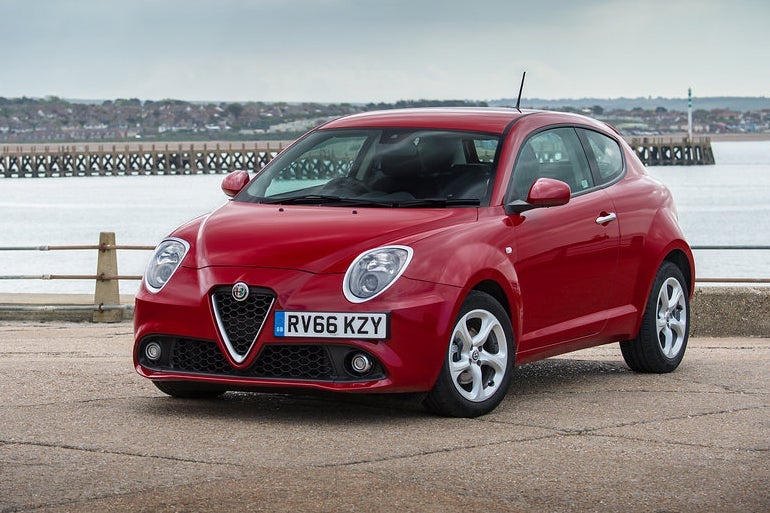Alfa Romeo MiTo (2008-2018) Review
Written by Andrew Brady
Quick overview
Pros
- Zippy engines offer good economy
- All but base models are well kitted out
- Chic looks stand out from the crowd
Cons
- Build quality not as good as key rivals
- No five-door option
- Sluggish automatic gearbox
Overall verdict on the 2008-2018 Alfa Romeo MiTo
"In this 2008-2018 Alfa Romeo MiTo review we're looking at one of the lesser-known small premium hatchback contenders, even though it manages to tick many of the boxes that buyers in this segment are looking for. It has a badge on the nose with some genuine heritage, it has a distinctive exterior that grabs your attention and it's well-specified too, elevating it above the swathe of humdrum superminis."
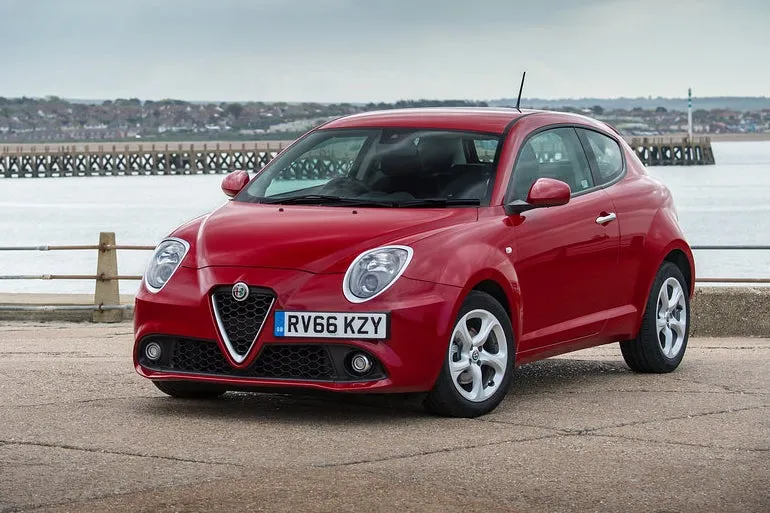
That also means it’s a rarer sight than the likes of the MINI, Fiat 500 and Audi A1 that are its natural adversaries, though that is also down to the fact it didn’t sell as well and not one of the best small cars you can buy...
Pitching it against premium hatchbacks meant list prices from Alfa Romeo that at the time started higher than most rivals. So to justify this, the Italian firm created a hatchback that is beautifully styled on the outside. Even the name was deliberately concocted from its Italian heritage, derived from Milan and Torino where the car was built. Hence the slightly odd mixed capitalisation.
Alfa Romeo also turns on the charm when it comes to trim levels and equipment. The entry point is the Alfa Romeo MiTo Turismo, followed by the Lusso and the Cloverleaf that revives a classic name from Alfa’s back catalogue. To confuse you all a bit more, other trims include the Sport and Sportiva, Sprint, Distinctive, Veloce, Super and Quadrifoglio - all used at different times in the car’s life.
All Alfa Romeo MiTo models come with Alfa’s DNA system which has Dynamic, Normal and All-weather modes. This changes the feel of the steering, accelerator, gearbox, brakes and suspension, so there are tangible differences in how the MiTo drives. Most MiTo models come with a five- or six-speed manual gearbox or there’s an automatic available with the 1.4 Turbo MultiAir petrol.
When it was launched, the Alfa Romeo MiTo was also notable for its safety, using a driver’s knee airbag to help gain a five-star Euro NCAP adult occupant score. As safety ratings and equipment have moved on, the MiTo has been left trailing, but it was one of the safest cars in its sector in 2009.
For a small car, the MiTo comes with a surprisingly wide range of engines, starting with a basic 1.4-litre petrol. The turbo 1.4-litre MultiAir is much better with power starting at 140PS, more than enough for a small hatch like the MiTo
The other petrol is the unusual TwinAir that has a tiny 0.9-litre size and half the cylinders with just two. Even with a modest 105PS, it punches above its weight in pace, though this is at the expense of fuel economy.
If it is economy you want, the 1.3-litre and 1.6-litre JTDm-2 diesels are the ones to look for. The smaller one should see around 65mpg, while the 1.6 is still good, delivering an average around the 50mpg mark.
Most Alfa Romeo MiTos come with a manual gearbox, with five speeds for the less potent versions and a six-speed for the faster Cloverleaf and Quadrifoglio models. Alfa also numbered itself among those car makers to offer a dual-clutch gearbox, called TCT, that was very on-trend in 2009. However, it was never the smoothest and the manual is always the wiser and more popular choice.
On the road, the Alfa Romeo MiTo is a bit of a mixed bag. Its steering responds immediately to driver input, which suits the sporty driver but can make it tiring on longer journeys. Its suspension is similar in that it’s fun when pointing the car down a jinking back road where it feels on a par with a MINI for fun. However, the MiTo is only average at best when it comes to absorbing bumps and quelling noise in the cabin.
Where you will notice a difference in the driving manners of the MiTo is the DNA modes. This lets you choose between Dynamic, Normal and All-weather settings. Unlike others that offer little variation, the Alfa’s actually does something.
In Normal, the car can feel lethargic, so it’s better in the Dynamic mode, even when driving in town. It’s just a shame Alfa didn’t build the MiTo with this as the default setting and forget about the others.
The Alfa Romeo MiTo is also off the pace when it comes to cabin space and quality. It’s more generous than a MINI for rear seat passengers, but a Volkswagen Polo beats it hands down. There’s a similar story with the boot, which is larger than a MINI’s but wastes this with the high load lip and a rear seat that was only offered with a 50/50 split as an option when rivals have this as standard.
While it’s possible to overlook such shortcomings on first acquaintance, the MiTo had a harder time ingratiating itself into wider acceptance. It didn’t quite have the design flair of the MINI or the practicality of the Volkswagen Polo. By the time the Audi A1 was launched in 2010, the writing was already on the wall for the MiTo. As such, the MiTo is a car you buy more with your heart than your head.
Looking for a used car for sale? We've got 100s of Alfa Romeo Approved Used Cars for Sale for you to choose from, including a wide range of Alfa Romeo MiTo models for sale.
Is the Alfa Romeo MiTo right for you?
For anyone looking for a stylish hatch that is not a MINI, Citroen DS3 or Audi A1, the Alfa Romeo MiTo is a very attractive proposition. It majors on looks just like its rivals and the closer you look, the better the detail design of the MiTo.
Another reason the Alfa Romeo MiTo will appeal is its wider than usual choice of engines for a hatch, all offering lively performance in town and, if you avoid the least powerful 1.4-litre petrol, on the motorway. Choose the smaller 1.3-litre diesel and you could achieve more than 70mpg if you have a light right foot.
The MiTo lives up to its looks with decent handling and performance, while the suspension is also supple enough to cope with most rumps and ripples it encounters on the road.
What’s the best Alfa Romeo MiTo model/engine to choose?
It’s very tempting to plump for the 0.9-litre TwinAir engine thanks to its tuneful engine note and gutsy performance. We also like the smaller 1.3 JTDm-2 diesel for its impressive economy.
However, the Alfa Romeo MiTo that gets the nod is the 1.4-litre MultiAir Turbo 170. It may be the most powerful engine in the line-up, but it offers the same economy as the less potent 140PS version while delivering enough pace to keep up with the likes of the MINI Cooper S. You could have the TCT automatic gearbox with this model, but we’d recommend staying with the six-speed manual for more fun, better fuel consumption and cheaper maintenance.
With this engine, you’ll be looking at either Veloce or Cloverleaf trims and that’s alright by us. They come with air conditioning, cruise control, rear parking sensors, Bluetooth connectivity and Alfa’s DNA drive control modes.
What other cars are similar to the Alfa Romeo MiTo?
There’s no ignoring the MINI in its many shapes and guises that sets the benchmark in the premium hatchback sector. You can choose from frugal to very fast versions and there’s also a convertible, albeit with cramped rear seat space.
The Audi A1 is a more sensible, practical choice than the Alfa, while the DS3 is fun to drive and well equipped. It’s also impossible to discount the Ford Fiesta or Volkswagen Polo for just how capable they are in every area that counts in a hatchback, other than perhaps missing the chic style of the MiTo.
Comfort and design: Alfa Romeo MiTo interior
"The Alfa Romeo MiTo has a lower driving position than many small hatches, giving it a sporty feel. There’s still decent vision out of the windscreen and side windows, but the rear screen is small and there are thick rear window pillars that can make reverse parking tricky. "
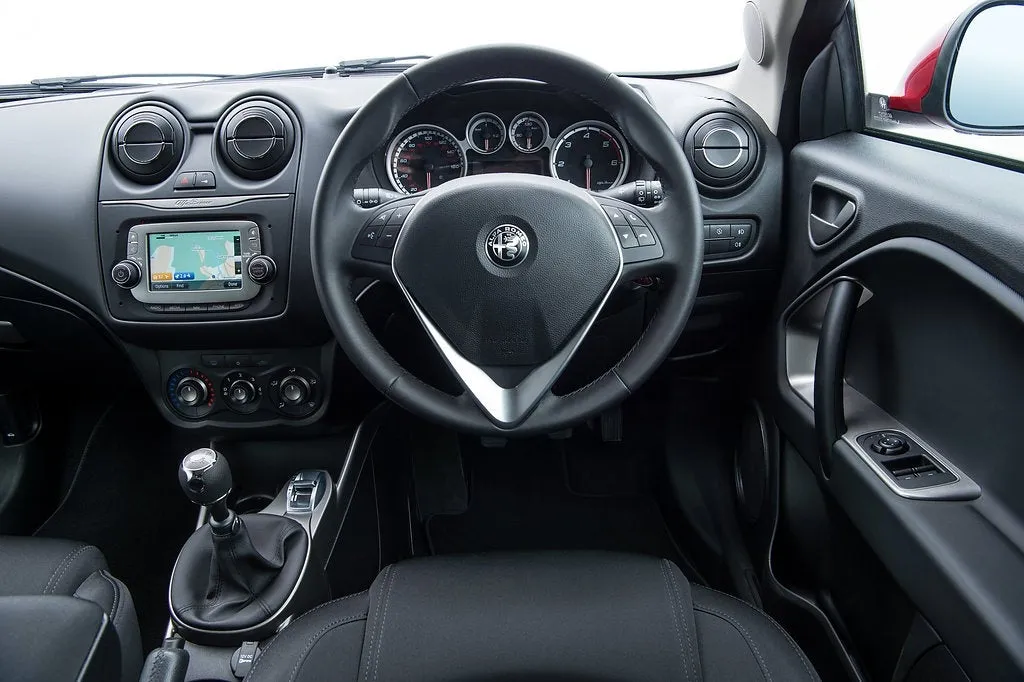
There’s reasonable support from the front seats and a decent range of adjustment to fine tune the height and backrest angle. But the Alfa Romeo MiTo's comfort is undermined by the oddly positioned rest for your left foot, and some will find the clutch pedals is placed a little too high if you have bigger feet or wear high heels when driving.
The reach and rake adjustable steering wheel helps things slightly, being able to move the wheel in and out so you can sit where you like without having to hunch or grasp for the steering wheel. However, it doesn’t have enough height movement, so it can seem too high-set for drivers who like to hunker down in the cabin.
This isn’t a hindrance to reaching the gear lever or handbrake naturally, so you don’t have to think about these actions when on the move. The rest of the Alfa Romeo MiTo dash also works well as the dials in the main instrument pod are easy to read and, as a nod to its roots, they stick with Italian wording - a lack of benzina means it's time to make a fuel stop.
Quality and finish
On first acquaintance, the Alfa Romeo MiTo feels sufficiently substantial to bear comparison with the likes of the Audi A1 or a MINI. Let your hands wander a little further, however, and you soon discover plastics that end in abrupt and sharp edges rather than smooth returns.
It’s clear Alfa decided to save some money on parts of the cabin where it thought you might not notice, like the centre console and the plastic trims where the seat belts feed into the door pillars.
Alfa Romeo MiTo models built from 2014 onwards have a better standard of finish. This is most obvious in the materials surrounding the dash and door trims. It’s a welcome upgrade, but the Alfa Romeo MiTo still falls behind the best in this class from Germany.
The impression that the MiTo is not quite as solidly made as its Teutonic competition is furthered by the way the switches and buttons operate. They do the job they’re supposed to, yet they don’t have the same satisfying precision and weighty action as an Audi, BMW or Volkswagen.
Infotainment: Touchscreen, USB, nav and stereo on the Alfa Romeo MiTo
A five-inch infotainment screen is small compared to those offered in most of the Alfa Romeo MiTo’s rivals, giving away how long ago this car was first put into showrooms. This Uconnect screen arrived in 2014 and was standard for most MiTo variants.
The touchscreen infotainment system is simple to understand, but using it while driving is difficult because the display is small. This means you need a steady hand to tap the right option when you want it. On the upside, it does at least come with Bluetooth, DAB radio and voice control for certain functions.
Uconnect also brought a USB connection to the Alfa Romeo MiTo’s cabin in addition to the aux-in port, plus satellite navigation is an option with this system.
Another feature of the Uconnect system is it can be operated by voice control. It also works with the usual music streaming choices such as Apple CarPlay and Android Auto. There is also an SD card slot to plug in your music, though this feels quite antiquated, so more Alfa Romeo MiTo drivers are likely to use Bluetooth.
Space and practicality: Alfa Romeo MiTo boot space
The Alfa Romeo MiTo's dimensions are 4.0m in length and 1.7m wide, so it sits squarely among the other small premium hatches in the sector. Settle into the driver’s seat of the MiTo and you’d swear it has a significant advantage over the likes of the MINI or DS3. To some extent, it does thanks to the wide range of adjustment for the driving position and a seat that is placed low in the car.
However, the Alfa Romeo MiTo doesn’t actually have any more room for those with longer legs. This applies to the rear seats too, which can just about cope with a couple of adults when required, but you wouldn’t want to be sat here on longer trips. This is part down to the restricted knee room against the back of the front seat and also because the high window line makes the rear feel very closed in.
If the Alfa Romeo MiTo you’re looking at has the optional sunroof, headroom in the front is not particularly compromised. Again, though, it’s those in the rear that pay the price with an even lower roof line that makes it seem very hemmed in.
The rear is strictly for two people as there are only belts for a pair of passengers, though this does mean there’s a bit more shoulder space. There’s a token cupholder set into the outer edges on either side of the back seat but little other storage back here.
Boot space of 270 litres is good for a small hatch and the tailgate neatly opens by pressing the Alfa Romeo badge so there’s no need for a separate handle. However, even though the boot has more outright space than a MINI, Alfa squanders this with a very high lip that makes it tricky to lift in anything heavier than the odd small shopping bag. When you want to extend the boot, the rear seat back is a one-piece item, or you could pay £450 for a split and tip option to vary the load bay. The rear seat does not fold down flat, leaving a less than useful cargo bay.
Handling and ride quality: What is the Alfa Romeo MiTo like to drive?
"For a lot of people, an Alfa Romeo badge means a car that places sporty handling and agility above anything else. This is true to some extent in the Alfa Romeo MiTo, which will deliver an engaging and sporty drive if the mood takes you."
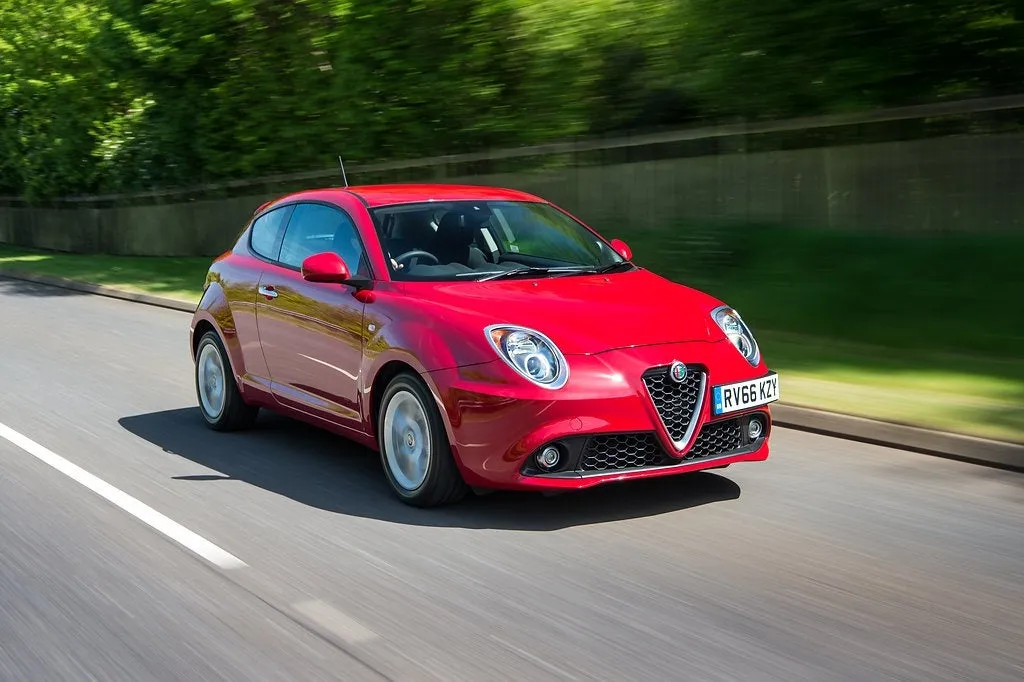
Much of this is down to the steering that reacts quickly to the driver’s inputs at the wheel, needing less of a turn to get the MiTo biting into a corner than in almost any rival with the exception of a MINI Cooper S or Ford Fiesta ST. This makes it great fun when driving on empty country roads thanks to plenty of grip and not too much body lean.
The DNA driving modes help here as you can engage the Dynamic setting to give the throttle, steering, brakes, suspension and gearbox an added fizz when you need it most.
The reality is, though, that most of your driving will be on a mix of town, A-roads and maybe a bit of motorway. Here, the Alfa Romeo MiTo feels a lot less fun and more humdrum whereas the MINI and Fiesta ST still maintain some of their special character even in the dullest situations.
A mix of potholes and ridges shows the MiTo can cope with most surfaces well. However, if you spend most of your time driving in town or on rough roads, the 18-inch alloy wheels of the Sportiva models will give you a much harsher time than the smaller 17-inch and 16-inch wheels.
Regardless of wheel size, all MiTo’s have strong brakes that give plenty of confidence when you need to use them to come to a stop in a hurry. Every model also comes with ESP stability control to keep the car pointing in the right direction on slippery roads.
What engines and gearboxes are available with the Alfa Romeo MiTo?
Alfa Romeo launched the MiTo with the turbocharged 1.4-litre MultiAir TB petrol engine in two versions - 135PS and 170PS, plus the 1.6 JTDm diesel. The petrols offer good acceleration to match the MiTo‘s sporty appeal and are definitely our choice.
There’s little to separate this pair for economy, so it comes down to how quickly you want your MiTo to perform. Both are quiet and have a good spread of power.
A non-turbo 1.4-litre petrol engine joined the range in mid-2010 with 95PS. It’s gentle on fuel but feels sluggish - very sluggish in fact. The 1.3-litre Alfa Romeo MiTo JTDm-2 diesel with 95PS arrived at the same time and feels more refined than many diesel-fuelled rivals. But again, it’s no ball of fire.
Alfa replaced the non-turbo 1.4 petrol with a (somehow) less powerful 78PS unit in mid-2011 and it’s best avoided as it feels well underpowered. Much better was the 105PS that also came in to offer a bit more pace over the previous 95PS unit. A lower powered 85PS 1.3-litre diesel was introduced alongside these units with the promise of more than 80mpg according to official figures at the time. Frugal yes, fun? No...
Perhaps the most interesting engine in the Alfa Romeo MiTo range arrived in the middle of 2012. The 0.9-litre TwinAir may have just 85PS or 105PS, but it feels eager. Bear in mind, however, this engine is quite thirsty, so you pay for the fun at the pumps.
The 1.6-litre JTDm-2 diesel with 120PS was added alongside the TwinAir and is a quick, efficient option, though it’s not as refined as the 1.3 diesel. The diesels stick with a manual gearbox, but petrols have the option of the TCT automatic, which can be jerky.
Refinement and noise levels
The distinctive note of the 0.9-litre TwinAir engine is a large part of its appeal. However, it sends vibrations through the cabin at low revs, so it’s better on faster roads where it doesn’t spend much time idling.
The rest of the Alfa Romeo MiTo’s engines keep noise levels low and even the diesels are quieter than most of the competition.
Less commendable is the amount of wind whistle and tyre rumble in the cabin. The road noise is particularly wearing on anything other than a smoothly polished surface. This undermines the MiTo’s credentials as a car to cover longer distances in.
Another downside of the Alfa Romeo MiTo is the feel of the controls, such as the notchy gear change and pedals. In manual models, the pedals feel like they come from three separate cars have have never met each other. It’s a real shame in a car with sporting pretensions.
Safety equipment: How safe is the Alfa Romeo MiTo?
The Alfa Romeo MiTo was unusual when launched in 2009 because it included a driver’s knee airbag as standard equipment. Along with twin front, side and curtains to give a total of seven airbags, it was enough to earn an impressive full five-star rating from Euro NCAP for adult safety in the cabin.
For children, the MiTo did not score as well, recording a middling three-star score for in-car protection. It was even less notable for pedestrian protection, managing only a two-star performance.
Every version of the Alfa Romeo MiTo gets ESP stability and traction control. Only the higher grade trim levels have rear parking sensors fitted as standard, otherwise this was a £220 option. Given the awkward view out of the back, we’d be looking for these on used models.
There is a pair of ISOFIX child seat points in the rear seats, though fitting a child seat can be tricky as the MiTo is only a three-door hatch, making access trickier than things like the MINI Clubman.
Not every model of Alfa Romeo MiTo has a space-saver spare wheel, so expect to find a puncture repair kit in Lusso and Distinctive models. Some Speciale and Veloce versions used run-flat tyres, while others had a space-saver placed in a recess in the boot under the load bay carpet.
MPG and fuel costs: How much does the Alfa Romeo MiTo cost to run?
"If fuel efficiency is your prime concern, the 95PS 1.3 JTDm-2 is the engine to look for as it delivers a real-world 70mpg. Even choosing the more powerful 1.6 diesel will give you 50mpg."
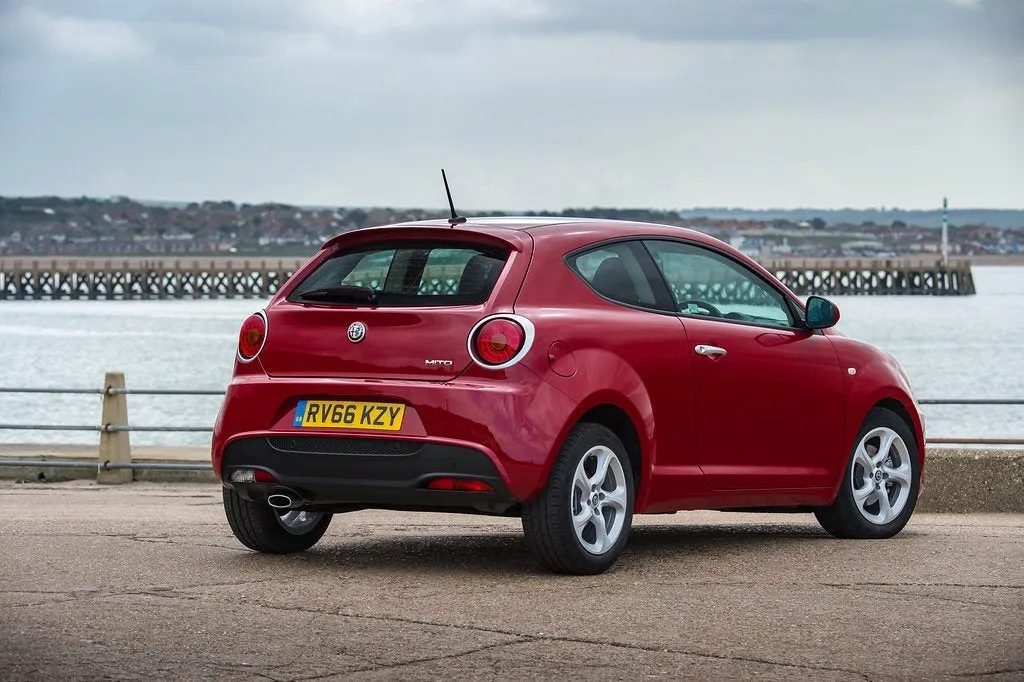
The 1.4-litre petrol engine struggles to better mid-30s consumption, even the non-turbo models so only the Alfa Romeo MiTo 1.4 TB MultiAir 140 with the TCT dual-clutch gearbox offers reasonable efficiency with 46mpg.
With a 45-litre fuel tank, you can expect around 400 miles per fill from the petrol engines and as much as 650 miles from the 1.3 diesel.
How reliable is the Alfa Romeo MiTo?
Alfa Romeo has something of a chequered history when it comes to reliability, and this is reflected in it placing 23rd out of 30 manufacturers in the HonestJohn.co.uk Satisfaction Index. Mind you, that is still higher than some rivals - like MINI.
It's also worth noting that the Alfa Romeo MiTo is a much-older design than the models in the current Alfa Romeo range, hence it scoring a far-from-wonderful 8.0 out of 10 for reliability. Owners have cited issues with MultiAir and MultJet engines, as well as electrical gremlins. We'd suggest that a fully-stamped Alfa Romeo service history is a must.
Insurance groups and costs
For a car with a sporty look, the Alfa Romeo MiTo can be very affordable to insure thanks to the small capacity of the 0.9-litre TwinAir and low power of the non-turbo 1.4 engines. The 1.4 starts in Group 8 and the TwinAir in Group 9, but ratings rise markedly as power and performance increase. For example, the Alfa Romeo MiTo 1.4 TB MultiAir 140 starts in Group 22, while the 170PS Cloverleaf is in Group 27 compared to a much more affordable Group 19 for an equivalent Mini Cooper.
VED car tax: What's the annual road tax on a Alfa Romeo MiTo?
The majority of Alfa Romeo MiTo versions will fall into the road tax bracket for cars built between 2001 and March 2017. This means a 1.4 TB MultiAir 140 with carbon dioxide emissions of 129g/km will cost you £125 per year.
If that sounds like too much to shell out, the Alfa Romeo MiTo 0.9 TwinAir petrol and 1.3 JTDm diesel engines are the ones to search out. The petrol has 99g/km CO2 emissions and the diesel just 89g/km, so both are tax-free at present.
How much should you be paying for a used Alfa Romeo MiTo?
"With new prices starting from a little more than £12k, the Alfa Romeo MiTo was always keenly priced against its premium hatchback rivals such as the Audi A1 and MINI Cooper. Even compared to the likes of the Ford Fiesta ST, the Italian was strong on value."
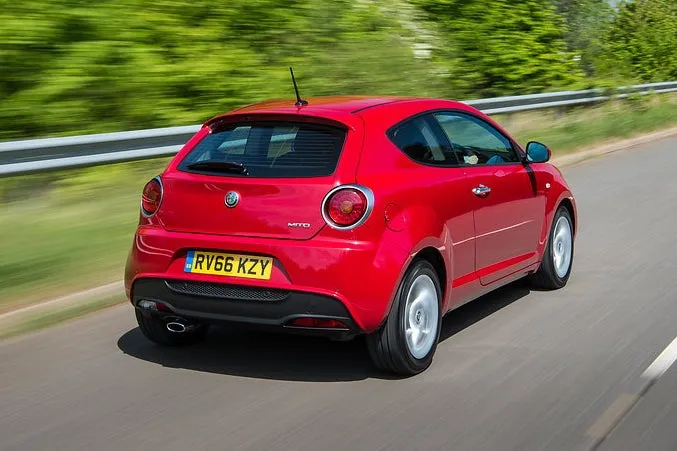
Early Alfa Romeo MiTo’s can be found at bargain basement prices - we found a 2016 car with 60,000 miles for just £6,000 - but you’re better off looking at younger cars with lower miles. We found a high-spec 2017 1.4 TB MultiAir Veloce with the TCT gearbox option and a remarkably-low 10,000 miles for £15,000, as close as you're going to get to brand new.
Given it was never the greatest seller there is limited choice, but most examples tend to be either the MultiAir or TwinAir. We found another low-mileage example: a 2016 Alfa Romeo MiTo TwinAir Speciale with only 16,000 miles for £9,000, which is pretty strong value.
Trim levels and standard equipment
There have been more than a few trim names and versions throughout the Alfa Romeo MiTo’s life. So strap in. It kicked off with the Turismo, Lusso and Cloverleaf models, with the last reserved for the most powerful 1.4 TB 170 petrol engine. Every model has electrically adjusted door mirrors and air conditioning. Climate control was a £360 option or a sunroof could be added for £700.
The Alfa Romeo MiTo Turismo comes with 16-inch alloy wheels and there was a choice of black and grey or black and red cloth upholstery. The Lusso is the more popular and features chrome door sill covers and exhaust tips. This model offered five interior trim choices, leather steering wheel with remote controls for the stereo and lumbar adjustment on the driver’s seat.
The Alfa Romeo MiTo Veloce gained 17-inch alloy wheels plus satin chrome around the headlights and door mirrors. A rear spoiler and deeper back bumper are also Veloce features, along with red-painted brake calipers. Inside, it has front sports seats, white lighting for the main dials and a central armrest with storage compartment.
A 2011 facelift introduced the Alfa Romeo MiTo Sprint in place of the Turismo and Lusso trims, while Progression became the new entry-level model and the Quadrifoglio Verde replaced the Cloverleaf. An Alfa Romeo MiTo Sportiva model was added in the summer of 2012 with 18-inch alloy wheels and Alcantara upholstery.
Another update in 2016 did away with the Sprint in favour of a base model known simply as MiTo. The Alfa Romeo MiTo Super took over from the Distinctive and the Alfa Romeo MiTo Speciale was ushered in to take over from the Quadrifoglio. Alfa revived the Veloce name for the quickest 1.4 TB 170 model with TCT dual-clutch automatic gearbox. Phew.
Ask the heycar experts: common questions
Why did Alfa Romeo stop making the MiTo?
What does MiTo stand for?
Is the Alfa Romeo MiTo a good first car?
Get our latest advice, news and offers
Keep me updated by email with the latest advice, news and offers from heycar.
By submitting you agree to our privacy policy
